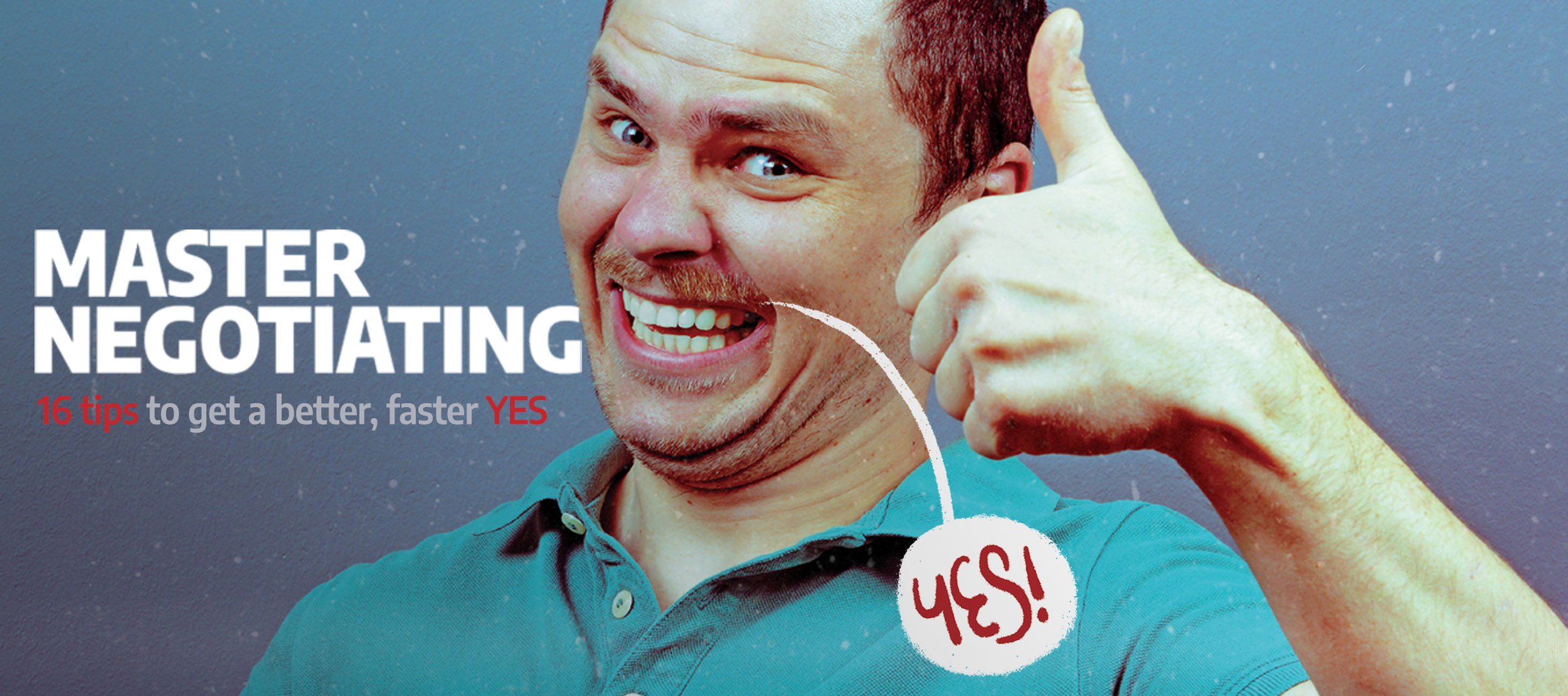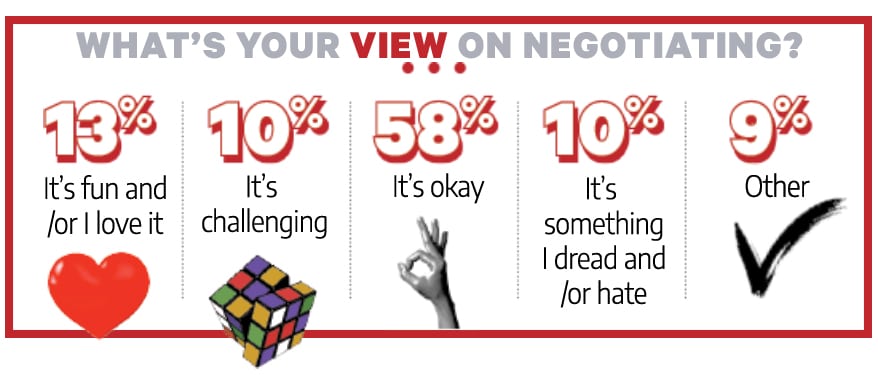
16 Tips to Become a Better Sign Business Negotiator
Suggestions from how to prepare intelligently to how to engage confidently and more.
Published
2 months agoon
THE KEY TO ANY successful negotiation starts with identifying the situation correctly: Is it a one-off commercial transaction that involves little more than bargaining over price, is it an internal negotiation with employees, family members or partners where the relationship is paramount, or is it a more complex engagement that involves building a potentially long-term partnership? Only in the first example is the size of the pie more or less fixed — one party’s gain in terms of a lower price paid is the other’s loss. In the others, it’s about finding a solution that will ideally create additional value and then distribute that value between the sides.
In such situations, a simple compromise often isn’t helpful for either side. A collaborative approach entails building trust, creativity and sharing interests. It also means being assertive, fair, patient and aware of the strategies and techniques employed by other negotiators.
 PHOTO: ISTOCKPHOTO
PHOTO: ISTOCKPHOTO
“Negotiation is about understanding objectives,” says James Keppel, CLI Services (Denver), one of many Brain Squad members to weigh in on this topic. “We were recently able to expand the scope of a project into areas that the client wasn’t aware that we could handle. The result was a more effective outcome, delivered in a turnkey fashion, saving our client money, frustration and time.”
In the following pages, we present insights from fellow sign pros, business authors and recent research that will provide you with practical strategies and tactics to help you feel more comfortable when negotiating.
 PHOTO: ISTOCKPHOTO
PHOTO: ISTOCKPHOTO
PREPARE
1 Rob Skelton, Fantastic Signs (New Smyrna Beach, FL) did his due diligence with permitting agencies to outwit a competitor and proved to a client that his competitor was providing faulty info. “Had to sharpen the proverbial pencil, but still won the client over!” he says.
Research industry benchmarks for the key numbers you’ll need. “This removes [price] from the subjective and places it firmly in the realm of the objective, and then everyone can agree that the outcome is fair,” says skills trainer Simon Horton, author of Negotiation Mastery.
Opening offer. The key word here is “defensible.” If you start too aggressively, you lose credibility and trust. So think big, yes. But be sure that you can make a substantive case for your first offer — you want to be taken seriously on every offer that follows.
Response to their opening offer. Get ready to deflect the punch. Rehearse what you’ll say: “I’m afraid that won’t work for us but …” / “Let’s put price off to the side for a moment and talk about what would make this a good deal.”
Concessions. You need at least one — no seasoned negotiator will accept your first offer. What can you extract for everything you give away? Try to ascertain what non-monetary things are likely to be important — speed of delivery, price or something else?
“We talk about the intangibles a lot,” says Nick Prentice, Blue River Digital (Columbia City, IN). “We had a customer that came to us ready to switch to a different company due to price. We had a simple conversation with us reminding them the importance of great communication, design expertise and reliability, and how those considerations should play into what you are actually paying for. Their goal was to either get us to lower our prices or they would jump ship. Instead, we had a great conversation, while solidifying the relationship at the same time.”
Answers to their curve balls. Imagine the other party says, “Tell me the absolute maximum you’d be willing to pay and I’ll see if I can shave off a bit.” You answer, “Tell me the absolute minimum you’d be willing to accept and I’ll see if I can add a bit.” Brainstorm answers to the questions you don’t want to answer.

 PHOTO: ISTOCKPHOTO
PHOTO: ISTOCKPHOTO
KNOW YOUR OPPONENT
2 “Researching the people you’re negotiating with is crucial,” says Clive Rich, a corporate negotiator and author of The Yes Book. “Then moderate your behavior accordingly. There are observable types we all recognize — for example, the big picture thinker, the detail fiend. Try tuning into their wavelength.”
 PHOTO: ISTOCKPHOTO
PHOTO: ISTOCKPHOTO
PREPARE EMOTIONALLY
3 “It’s important to visualize all the different ways the negotiating process can unfold and prepare appropriate emotional responses that keep the negotiation moving,” notes a primer on negotiation from UC Berkeley. “Being poised and stable makes asking for what you want and saying ‘no’ much easier,” says the Berkeley paper. If you’re prone to jitters, reframe the anxiety as excitement — what you could win, not lose.
“I’m not comfortable negotiating with vendors or customers,” says Rita Siprak-Weill, Minuteman Press Annapolis (Annapolis, MD). “I expect the price to be the price stated and I merely decide if I want to pay that price. When I don’t, I just tell them what I would like and see if they will agree. I would like to be more unemotional about it, but I invariably get defensive or aggressive depending on the situation.”
HAVE A PLAN B
4 Behind every great plan stands a not as great but still acceptable Plan B. In negotiating circles it’s known as a “best alternative to a negotiated agreement.” “The definition of a successful negotiation is satisfying your interests better than your ‘batna’ could,” says William Ury, co-author of the classic Getting to Yes.
“Regarding customers who want to spend less, it is imperative to know what you are pricing and have the ability to offer value-engineering solutions that will not compromise clients’ design intent, yet will lower the costs to meet their budget concerns,” says Matt Robinson, Eastern Sign Tech (Burlington, NJ). “This happens often.”
 PHOTO: ISTOCKPHOTO
PHOTO: ISTOCKPHOTO
QUESTION:
Who are the hardest people to negotiate with?
| Customers |
|
39%
|
| Vendors |
|
17%
|
| Partners |
|
6%
|
| My own staff |
|
12%
|
| My family (outside the company) |
|
12%
|
| Other (depends on the person) |
|
14%
|
QUESTION:
How would you rate your negotiating skills?
| Excellent |
|
13%
|
| Pretty good |
|
47%
|
| Good |
|
29%
|
| Not so good |
|
10%
|
| Poor |
|
1%
|
NEGOTIATE WITH THE RIGHT PERSON
5 Negotiating lore is full of stories of people who tried cutting a deal with the powerless underling or didn’t realize the “clerk” setting up the projector was actually the CEO. Make sure the person you’re asking has the authority to approve a deal or give you a discount. It may not be clear who is the real power holder. Notes one author, the person speaking the most is not always the person with the most power, but rather it’s the one whom most people address.
 PHOTO: ISTOCKPHOTO
PHOTO: ISTOCKPHOTO
BE LIKEABLE
6 While your goal should be respect, not affection, being likeable is a great asset at the negotiation table. Connecting on a human level creates positive emotions that allow you and your counterpart to trust, be creative and take risks with ideas. A few minutes of chit-chat before getting down to business also allows you to observe people in less-guarded moments, and maybe even their readiness to close.
DON’T NEGOTIATE AGAINST YOURSELF
7 It’s natural to get last-minute nerves, but steel yourself and hold to your opening offer, especially in the face of a belligerent opponent. Notes Rich: “A lot of people think, ‘OK, I was going to ask for 100, but the other side will be really cross with me, so I’ll ask for 60 and see how I get on.’ You’ve already given away 40% without the other side doing anything. You’ve become your worst enemy.” The same goes for important information. The less the other side knows about your company’s business, the better off you are.
“NO” IS A START, NOT THE END
8 So you enter big and are immediately slapped down with a bigger “no.” View this as a sign the negotiation has just begun. Chris Voss, a former FBI hostage negotiator and co-author of the book Never Split the Difference, suggests to follow up with questions that help both parties come to a solution: “What about this doesn’t work for you?” / “What would you need to make this work?”
BE GENEROUS
9 The traditional view is to never give away anything without 1) knowing its value to the other party, and 2) extracting something in return. Voss disagrees. “This correlates real strongly with people I want to do business with. If they figured out something that they know is valuable for me and … they’ve offered it like right off the bat, no strings attached… that’s the kind of person I want to do business with.” However, choose your gifts carefully. The idea is to build rapport, not undermine your bargaining position. Giving away a 10% discount on price without a reason will only encourage your counterpart to expect a similar discount every time.

SUMMARIZE EARLY AND OFTEN
10 Before people can move forward they need to feel they were heard, and one of the best ways to do that is by summarizing and paraphrasing back to them what they say. “Summarize early and often their reservations, their concerns, what they are up against: Ask, ‘Do I have that right?’ You’ve got to get to ‘That’s right,’” says Voss. ‘No, it’s not’ is almost as helpful. “You’re going to be much more candid with me if you’re correcting me than if I’m asking you with a question.”
 PHOTO: ISTOCKPHOTO
PHOTO: ISTOCKPHOTO
JUST ASKING
11 If you don’t ask, the answer is always “no” is a central tenet of negotiating. Indeed, “just asking” — even with no justification — can often work. The key is a friendly tone, “I was hoping you could help me out.” And if you get pushback, you can always respond in good humor, “Well, I had to ask!”
PROTECT THE UPSIDE
12 Always keep an open mind. Negotiators have a saying, Voss says: “Never be so sure of what you want that you wouldn’t take something better.” This is why listening is vital. Pay attention and there’s a good chance, if the other side trusts you, that they’ll reveal something that will make you better off than you expected to be.
DEALING WITH BULLIES
13 Many aggressive types are quick with deadlines and threats, but they don’t have a strong grasp on the underlying fundamentals of the negotiation. Overwhelming you is their entire strategy. Stay calm and you can take advantage of the situation. Suggest you are likely to give better concessions if you can get a commitment to collaborate. Once people make such a commitment, most feel bound by it. Model collaborative behavior by asking questions to discover your counterpart’s interests.
Some customers want easy rush jobs but often they’re overbearing, according to Derek Collins, Advanced Display (Kent, OH). “I double or even triple the price because of how adamant they are about getting it over the phone, and almost all of them go through with the order,” he says.
TAKE IT SLOW
14 Every seller will try to rush you to close a deal. But there is usually little to be gained from racing to the end of negotiation. Not only does it eliminate the potential to develop mutually beneficial solutions by testing assumptions with your counterpart, but there are also strategic reasons to take your time. A push to close a deal right from the start will usually prompt the other party to get defensive, and rightly so, says corporate negotiator Alan McCarthy.
 PHOTO: ISTOCKPHOTO
PHOTO: ISTOCKPHOTO
LISTEN MORE, TALK LESS
15 This is not just being quiet — it’s showing sincere curiosity, leaning forward, obvious contemplation, summarizing, and asking relevant follow-up questions. “Focus first on what they have to say,” says Voss. “Once they are convinced you understand them, only then will they listen.” And there are other benefits to listening: goodwill and information — also, you’ll give less away if you’re not talking all the time.
“Listen,” concurs Don Budde, CalComp Graphic Solutions (Cypress, CA). “Understand customer needs. Understand what the customer values. Provide a solution that is mutually beneficial.”
RECOGNIZE GENDER BIAS
16 In many ways, women are better equipped to be negotiators than men: They tend to be innate problem solvers, are more cooperative, listen better, are more empathetic, and even more ethical, according to a 2017 UC Berkeley study. But gender bias, in particular the way assertive women are considered less likeable (by both men and other women), means outcomes are often less optimal. In her book Ask for It, Carnegie Mellon University’s Linda Babcock urges women to use a cooperative style to avoid the backlash. “Don’t be timid but use the right inflection and wording choices,” she says, recommending inclusive language. Instead of saying “I” and “me,” which can create distance, say “we” and “us” to show you are working together to solve a problem. Also, beware of acting differently to be perceived as more likable, she says.
It’s not enough to know the tactics, strategies and “anchor phrases” that make a good negotiator. You need to be able to reflexively call on them when needed and feel comfortable verbalizing them, often in pressure situations. Role-play is a good way to practice, as are the micro-negotiations you’re confronted with every day. “Take a negotiating risk today,” says Frank Mobus, author of Creative Conflict, be it at work, at home, in the mall. Build rapport, probe with curiosity, shift perspective, model transparency, trade value, go silent … ask, “What is your flexibility on that?” You may be surprised at how effective it all is.
AdvertisementSigns of the Times has been the world leader in sign information since 1906. Contact Signs of the Times' editors at editor@signsofthetimes.com.

SPONSORED VIDEO
Introducing the Sign Industry Podcast
The Sign Industry Podcast is a platform for every sign person out there — from the old-timers who bent neon and hand-lettered boats to those venturing into new technologies — we want to get their stories out for everyone to hear. Come join us and listen to stories, learn tricks or techniques, and get insights of what’s to come. We are the world’s second oldest profession. The folks who started the world’s oldest profession needed a sign.
You may like

NUtec Digital Ink Invests in Solar Energy for Facility

5 Reasons to Sell a Sign Company Plus 6 Options

21 Larry Albright Plasma Globes, Crackle Tubes and More
Subscribe

Bulletins
Get the most important news and business ideas from Signs of the Times magazine's news bulletin.
Most Popular
-

 Tip Sheet2 weeks ago
Tip Sheet2 weeks agoAlways Brand Yourself and Wear Fewer Hats — Two of April’s Sign Tips
-

 Photo Gallery4 days ago
Photo Gallery4 days ago30 Snapshots of the 2024 ISA Sign Expo
-

 Ask Signs of the Times6 days ago
Ask Signs of the Times6 days agoWhy Are Signs from Canva so Overloaded and Similar?
-

 Real Deal2 weeks ago
Real Deal2 weeks agoA Woman Sign Company Owner Confronts a Sexist Wholesaler
-

 Paula Fargo1 day ago
Paula Fargo1 day ago5 Reasons to Sell a Sign Company Plus 6 Options
-

 Benchmarks1 week ago
Benchmarks1 week ago6 Sports Venue Signs Deserving a Standing Ovation
-

 Photo Gallery1 day ago
Photo Gallery1 day ago21 Larry Albright Plasma Globes, Crackle Tubes and More
-

 Women in Signs2 weeks ago
Women in Signs2 weeks ago2024 Women in Signs: Megan Bradley










